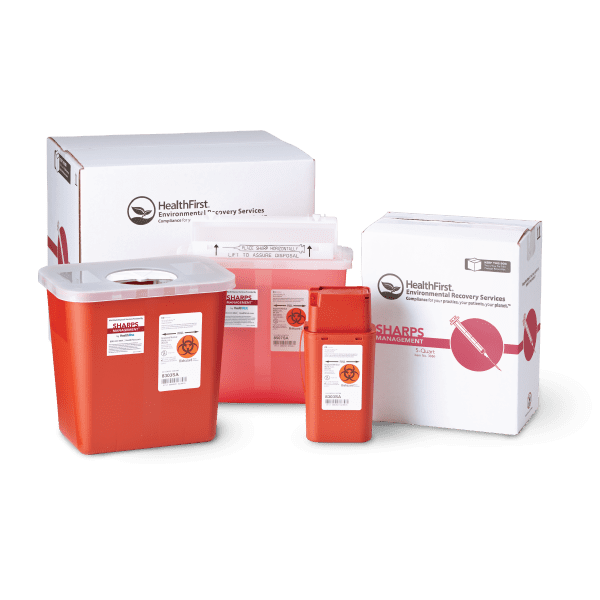Understanding the Different Kinds Of Waste Disposal Methods
In the realm of waste management, the range of disposal techniques offered today is vast and differed, each technique offering a distinctive function in attending to the obstacle of waste disposal. click here. From reusing methods that intend to give brand-new life to products, to the intricate processes of contaminated materials management, the landscape of waste disposal is intricate yet essential for environmental sustainability. Recognizing the subtleties of these various techniques not just drops light on the significance of liable waste monitoring yet additionally triggers us to reconsider our strategy in the direction of waste disposal in a quickly progressing world

Recycling Techniques
Recycling approaches are vital for sustainable waste administration practices in both commercial and domestic settings. medical waste disposal. By implementing efficient recycling strategies, a considerable amount of waste can be drawn away from land fills, conserving all-natural sources and reducing the environmental influence of production processes
In property locations, curbside recycling programs play a vital function in encouraging families to separate recyclable materials from general waste. Materials such as paper, plastics, glass, and metals can be sorted and collected for processing right into brand-new products, minimizing the requirement for raw products and energy-intensive production procedures.
Industrial facilities also count on recycling techniques to lessen waste generation and promote a round economy. By executing closed-loop systems, services can reuse products within their production procedures, lowering costs and environmental impact. medical waste disposal. In addition, commercial recycling programs typically involve partnerships with specialized reusing centers to ensure that materials are effectively sorted, refined, and reintegrated into the supply chain
Composting Methods

Aerated fixed heap composting includes mixing organic waste products in a huge stack and on a regular basis transforming it to guarantee appropriate aeration. This approach is effective for large-scale composting operations. On the various other hand, vermicomposting makes use of earthworms to damage down raw material into nutrient-rich spreadings. This method is well-suited for smaller-scale operations and houses.
In-vessel composting involves putting organic waste in a closed container with regulated problems for temperature and aeration. Windrow composting includes forming long rows of natural waste and consistently turning them to promote decomposition - medical waste removal.
Garbage Dump Disposal
Garbage dump disposal is a typically used technique for handling waste that can not be recycled or composted. Methane gas, a by-product of disintegrating natural waste in land fills, is usually collected and utilized as a source of eco-friendly energy. Initiatives to decrease reliance on land fills consist of advertising waste reduction, recycling, and discovering alternate waste disposal approaches to decrease the environmental impact connected with conventional landfill disposal techniques.

Waste-to-Energy Incineration
Incineration of waste for energy generation is an approach significantly being thought about as an alternative to traditional land fill disposal strategies. Waste-to-energy incineration involves the burning of waste materials at high temperatures, generally in specialized facilities designed to create electricity or warmth via the process - click here. This method not just lowers the volume of waste that would certainly otherwise be predestined for landfills yet also uses the warmth created during incineration to create energy
One of the essential advantages of waste-to-energy incineration is its ability to produce electricity while reducing the ecological effect compared to standard landfill disposal approaches. By transforming waste into energy, this approach helps in reducing greenhouse gas exhausts and reliance on fossil fuels for power generation. Furthermore, waste-to-energy facilities are geared up with sophisticated air pollution control technologies to minimize prospective toxic wastes released throughout the burning process.
Hazardous Waste Management

Considering the crucial significance of liable waste monitoring methods, specifically in the world of environmental sustainability, the focus now shifts towards the intricate domain of Hazardous Waste Management. Hazardous waste presents significant threats to both human health and wellness and the atmosphere, necessitating specialized handling and disposal methods. Typical examples of contaminated materials include chemicals, batteries, chemicals, and digital waste.
Dangerous Waste Management entails the identification, collection, transport, therapy, and disposal of materials deemed harmful or possibly unsafe. This procedure needs adherence to rigorous laws and standards to alleviate damaging effect on environments and public health. Different approaches are employed in managing hazardous waste, including recycling, secure garbage dumps, encapsulation, and chemical therapy.
Appropriate Contaminated Materials Administration is critical for stopping contamination of soil, water resources, and air pollution. It is important for industries, laboratories, health care facilities, and other generators of unsafe waste to execute durable administration methods, training programs, and emergency situation response intends to make sure the secure handling and disposal of these products. Failing to manage harmful waste appropriately can have far-reaching repercussions, underscoring the significance of diligent and liable practices in this field.
Conclusion
In final thought, waste disposal methods play an important duty in managing and reducing the effect of waste on the setting. It is vital for industries and people to recognize the various waste disposal strategies readily available and choose the most ideal technique for sustainable waste management.
In the world of waste monitoring, the selection of disposal techniques offered today is vast and varied, each approach serving an unique purpose in resolving the difficulty of waste disposal. click here. From recycling techniques that intend to provide brand-new life to materials, to the elaborate procedures of dangerous waste administration, the landscape of waste disposal is intricate yet important for ecological sustainability. Comprehending the subtleties of these different methods not just loses light on the relevance of responsible waste management but also triggers us to reassess our method in the direction of waste disposal in a rapidly company website developing globe
Initiatives to reduce dependence on garbage dumps consist of advertising waste decrease, recycling, and exploring alternate waste disposal approaches to decrease the environmental impact linked with standard garbage dump disposal techniques.
It is important for markets and people to recognize the different waste disposal methods readily available and choose the most proper technique for sustainable waste administration.